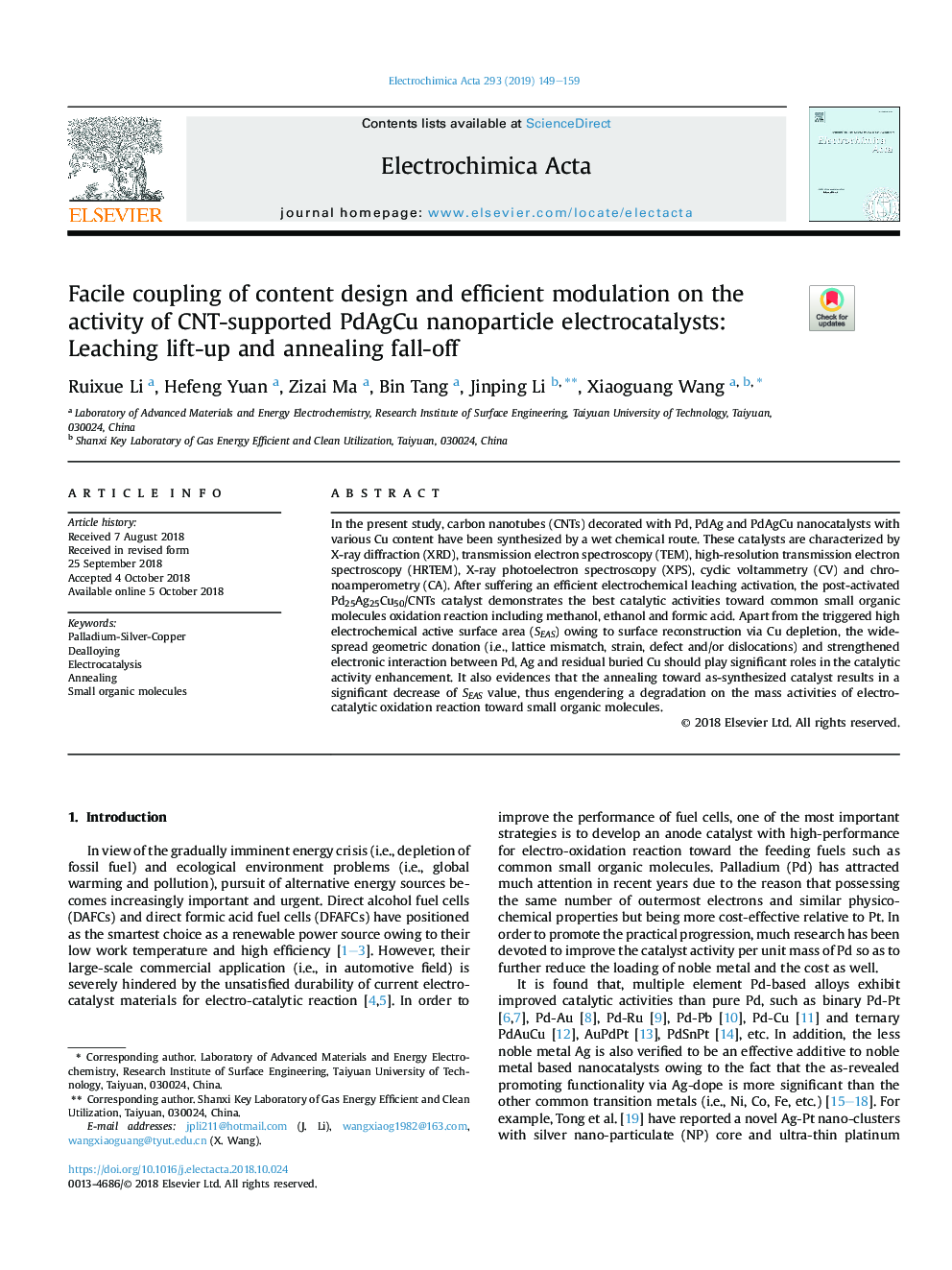| Article ID | Journal | Published Year | Pages | File Type |
|---|---|---|---|---|
| 11008110 | Electrochimica Acta | 2019 | 11 Pages |
Abstract
In the present study, carbon nanotubes (CNTs) decorated with Pd, PdAg and PdAgCu nanocatalysts with various Cu content have been synthesized by a wet chemical route. These catalysts are characterized by X-ray diffraction (XRD), transmission electron spectroscopy (TEM), high-resolution transmission electron spectroscopy (HRTEM), X-ray photoelectron spectroscopy (XPS), cyclic voltammetry (CV) and chronoamperometry (CA). After suffering an efficient electrochemical leaching activation, the post-activated Pd25Ag25Cu50/CNTs catalyst demonstrates the best catalytic activities toward common small organic molecules oxidation reaction including methanol, ethanol and formic acid. Apart from the triggered high electrochemical active surface area (SEAS) owing to surface reconstruction via Cu depletion, the widespread geometric donation (i.e., lattice mismatch, strain, defect and/or dislocations) and strengthened electronic interaction between Pd, Ag and residual buried Cu should play significant roles in the catalytic activity enhancement. It also evidences that the annealing toward as-synthesized catalyst results in a significant decrease of SEAS value, thus engendering a degradation on the mass activities of electrocatalytic oxidation reaction toward small organic molecules.
Related Topics
Physical Sciences and Engineering
Chemical Engineering
Chemical Engineering (General)
Authors
Ruixue Li, Hefeng Yuan, Zizai Ma, Bin Tang, Jinping Li, Xiaoguang Wang,
